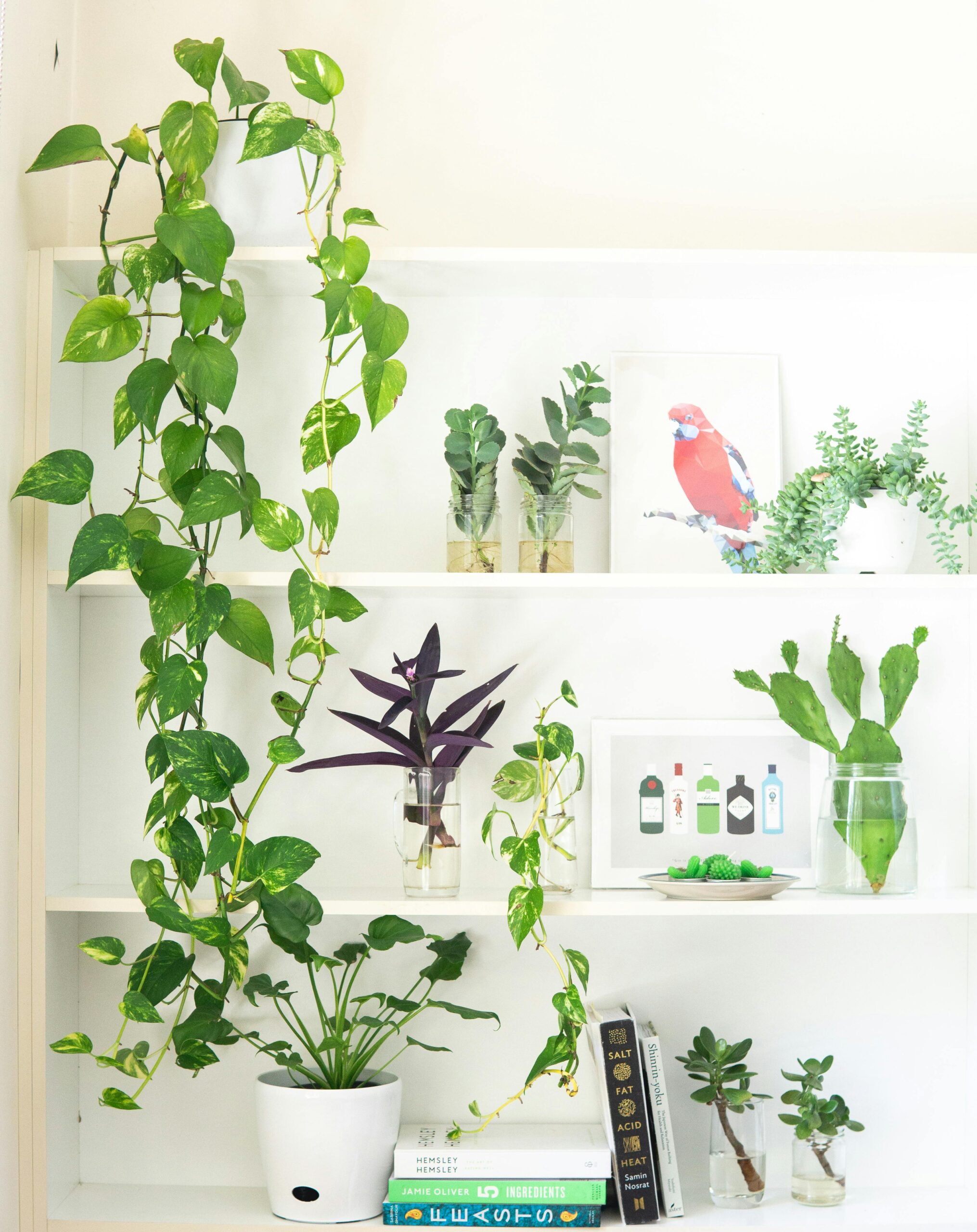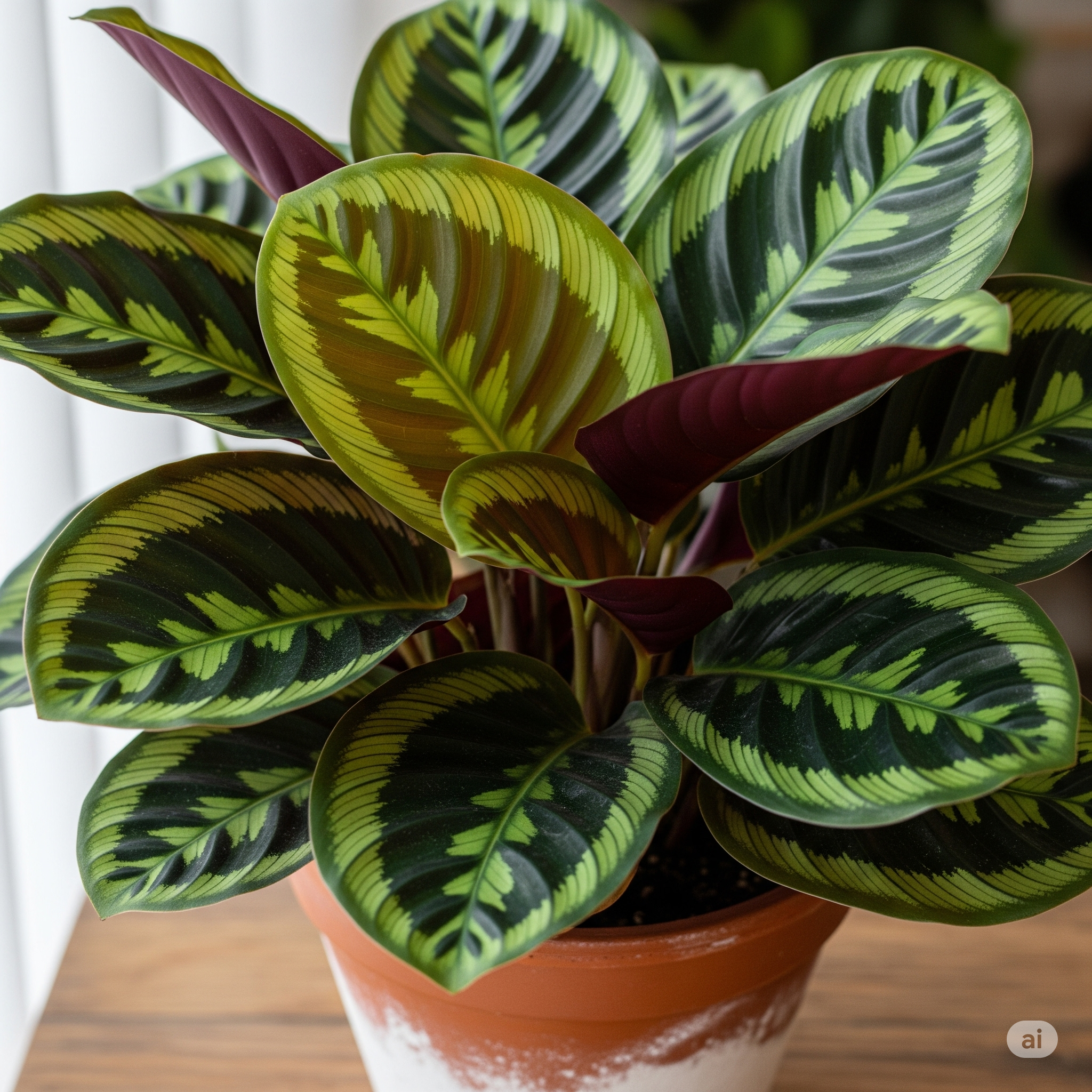Some links on this Website are affiliate links, meaning we may earn a commission if you make a purchase, at no additional cost to you. Please read our full Affiliate Disclosure for more details.
English ivy (Hedera helix) is one of the most popular houseplants because of its elegant, trailing vines and classic appeal. It looks beautiful cascading from hanging baskets, climbing trellises, or even as a tabletop plant. While it’s often seen as a hardy and low-maintenance plant, many gardeners struggle to keep it thriving indoors.
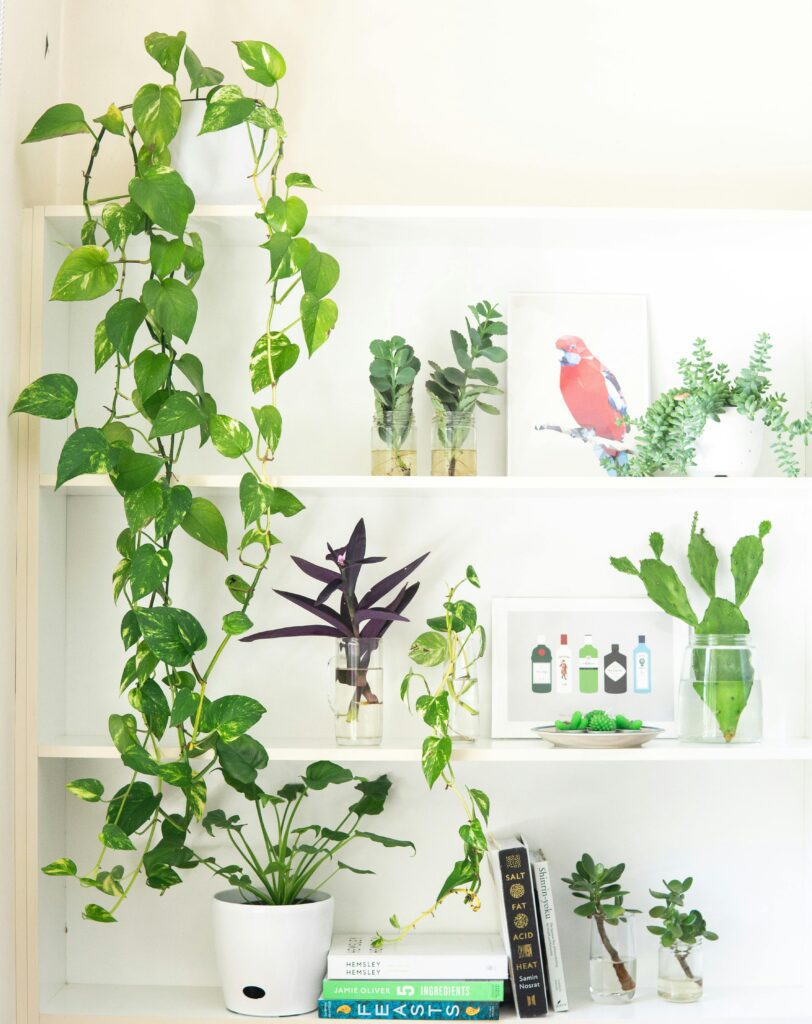
The secret to success is knowing the mistakes to avoid when growing English ivy. These mistakes are often simple but can have long-term effects on the plant’s health. By understanding what not to do, you’ll be able to provide the right conditions for lush, vibrant, and healthy growth.
20 Top Air-Purifying Plants That Remove Toxins from Indoor Air
7 Common Mistakes to Avoid When Growing English Ivy as a Houseplant
Overwatering the Plant
Overwatering is one of the top mistakes to avoid when growing English ivy indoors. Ivy roots are highly sensitive to soggy soil, and constant moisture creates the perfect environment for root rot and fungal infections. Many beginners think watering frequently keeps the plant healthy, but it actually suffocates the roots.
How to fix this mistake:
- Let the top 1–2 inches of soil dry out before watering.
- Use pots with drainage holes to prevent water buildup.
- Water less frequently in winter since the plant’s growth slows down.
By striking the right balance, you’ll avoid root damage and encourage stronger root development.
Placing Ivy in Low Light
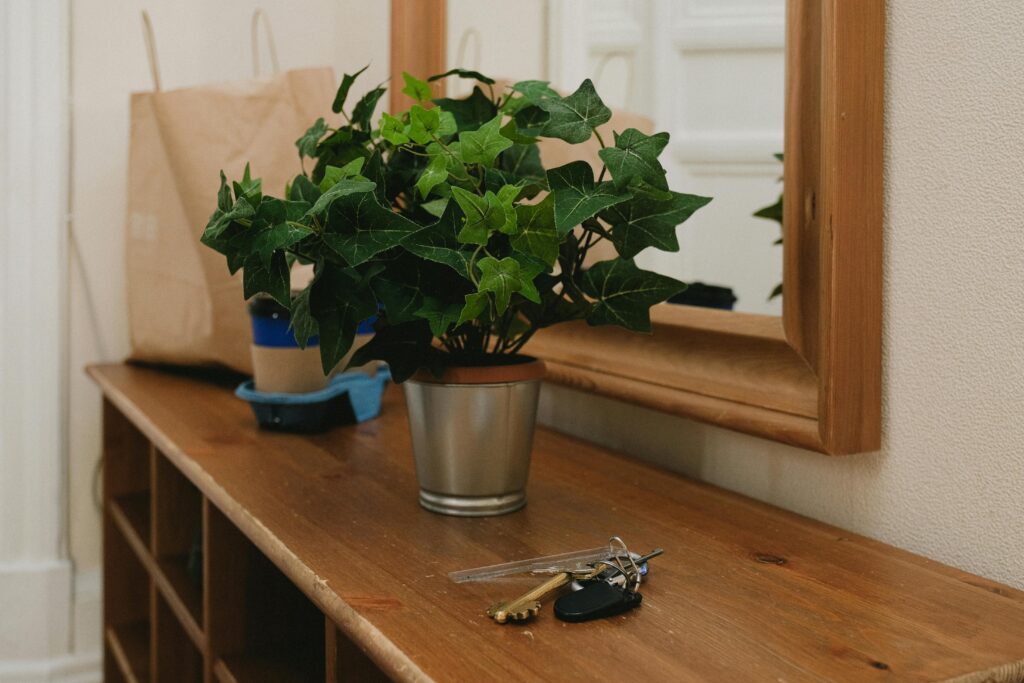
English ivy is versatile, but it still has its preferences. Low light conditions are one of the most common indoor gardening mistakes. When ivy is left in dim corners, it often grows weak, stretched-out vines with pale leaves. This happens because the plant is reaching for more light.
Better option: Place ivy near an east- or north-facing window where it can get bright, indirect light. For variegated varieties, adequate light is especially important to maintain their striking leaf patterns. If natural light is limited, a grow light can make a huge difference.
Ignoring Humidity Needs
Indoor air, especially during the winter months, tends to be dry due to heating systems. English ivy naturally thrives in environments with higher humidity, so dry air can cause the leaf tips to brown and crisp.
How to increase humidity:
- Place a humidifier near your plants.
- Mist the leaves lightly a few times per week (avoid over-misting, which can attract pests).
- Use a pebble tray filled with water and set the pot on top (without touching the water).
Meeting this need will keep the foliage lush and prevent the leaves from drying out prematurely.
Using the Wrong Soil
Soil is the foundation of your plant’s health, and choosing the wrong type is one of the overlooked mistakes to avoid when growing English ivy. Dense or compact soil holds too much water, depriving the roots of oxygen. Over time, this weakens the plant and encourages fungal problems.
Best soil mix:
- Standard potting soil mixed with perlite for drainage.
- Avoid heavy garden soil or clay-based mixes.
- Adding a bit of peat moss helps with aeration.
Good soil provides the perfect balance of moisture retention and airflow, creating the conditions ivy loves.
Letting Pests Go Unnoticed
English ivy is prone to pests such as spider mites, aphids, and scale. These thrive in indoor conditions, especially when the air is dry or when plants are overcrowded. A major mistake many plant owners make is not checking for pests until the plant shows severe damage, like yellow leaves, sticky residue, or webbing.
Prevention and treatment:
- Inspect your plant weekly, especially the undersides of leaves.
- Wipe leaves with a damp cloth to remove dust and deter pests.
- If pests appear, treat them early with neem oil, insecticidal soap, or rubbing alcohol on a cotton swab.
Catching infestations early keeps your ivy from suffering long-term damage.
Forgetting to Prune
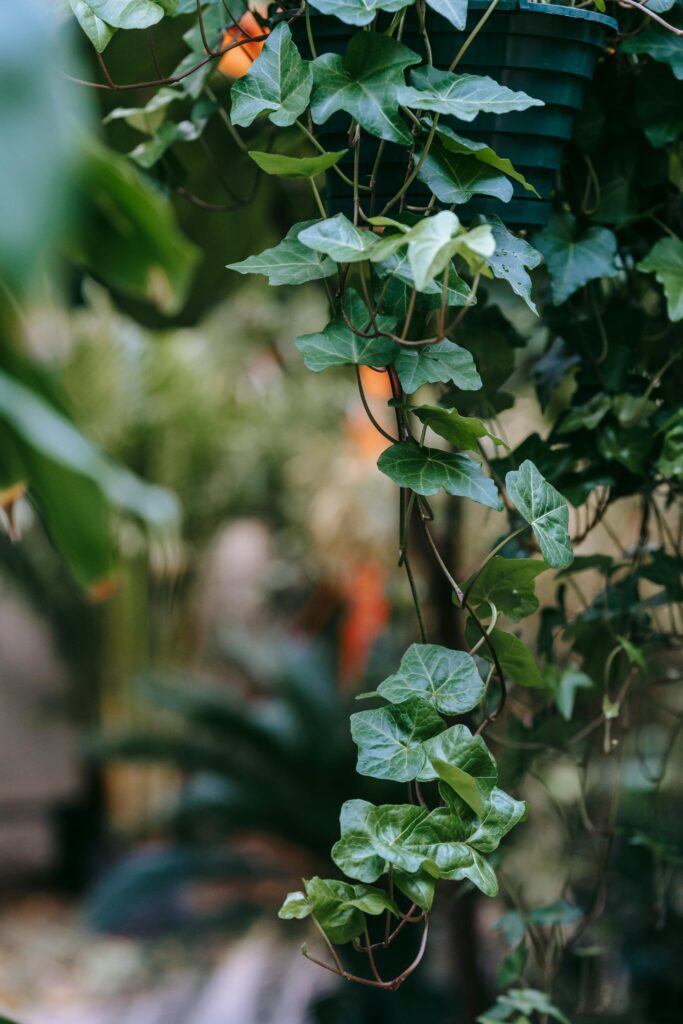
Pruning is more than just making your ivy look neat, it directly affects its health. Without regular trimming, ivy tends to become leggy, uneven, and less full. Pruning also removes old or diseased leaves, allowing the plant to focus its energy on healthy growth.
How to prune effectively:
- Trim back overgrown vines to encourage branching.
- Use clean, sharp scissors or shears to prevent infection.
- Don’t remove more than one-third of the plant at once.
Consistent pruning will keep your English ivy bushy and vibrant, perfect for display.
Exposing Ivy to Drafts and Temperature Swings
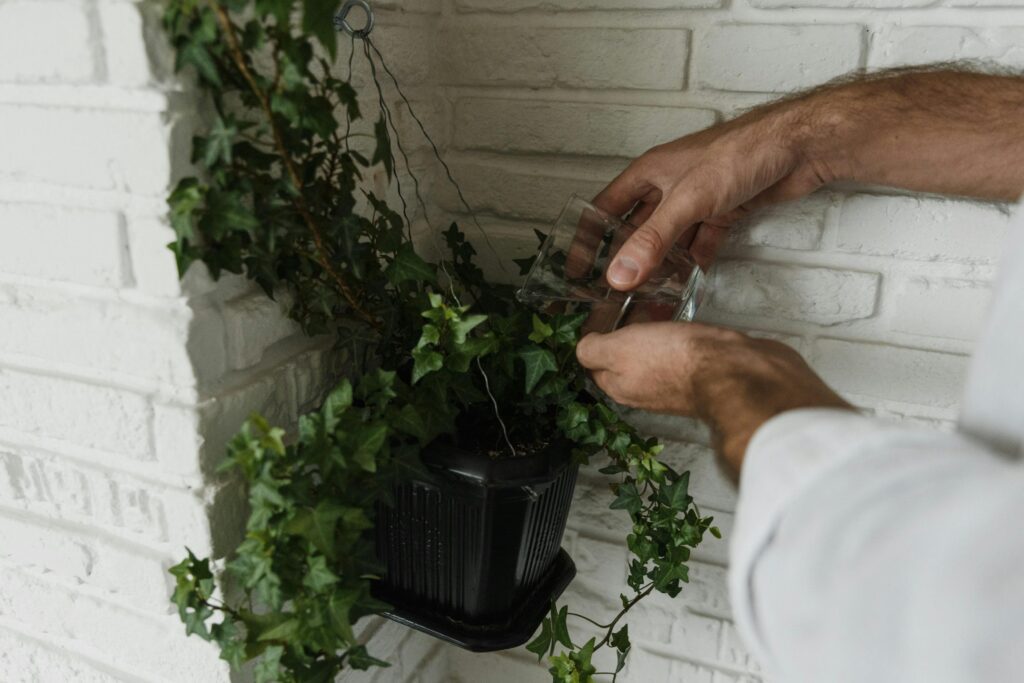
Indoor climates can be tricky. English ivy prefers steady, moderate temperatures (60–75°F / 15–24°C). Placing your plant near heating vents, air conditioners, or drafty windows is one of the easiest ways to stress it out. Sudden changes in temperature can cause leaves to drop or wilt.
Best placement tips:
- Keep ivy away from direct heat sources like radiators.
- Avoid windows that are frequently opened in winter.
- Ensure steady room conditions year-round.
Maintaining a stable environment will keep your ivy strong and reduce unnecessary stress.
Conclusion
English ivy may have a reputation for being hardy, but it still requires attentive care. By learning the mistakes to avoid when growing English ivy, you’ll prevent the most common issues that frustrate plant owners. Avoid overwatering, provide the right light, maintain humidity, and check regularly for pests. On top of that, prune consistently and protect your ivy from temperature swings.
When you avoid these common pitfalls, your ivy will reward you with lush, trailing greenery that can transform your indoor space. Whether in a hanging basket, on a shelf, or trained along a trellis, English ivy can thrive indoors—if you give it the right care.
FAQs on Growing English Ivy Indoors
1. How often should I water my indoor English ivy?
Water when the top 1–2 inches of soil feel dry. Overwatering is a common mistake, so always check the soil before watering.
2. Why are the leaves on my English ivy turning yellow?
Yellowing leaves are often a sign of overwatering or poor drainage. Make sure your pot has drainage holes and that you’re not watering too frequently.
3. Can English ivy survive in low light conditions?
It can survive but won’t thrive. Low light leads to leggy, weak growth. Bright, indirect light is best for healthy vines and vibrant leaves.
4. How do I keep pests away from English ivy indoors?
Regularly inspect leaves, wipe off dust, and use neem oil or insecticidal soap at the first sign of pests like spider mites or aphids.
5. Does English ivy need high humidity?
Yes, it prefers moderate to high humidity. If your home is dry, use a humidifier, mist the plant lightly, or place it on a pebble tray to increase moisture in the air.
6. Should I prune English ivy often?
Yes. Regular pruning keeps ivy bushy and prevents it from getting too leggy. Trim overgrown vines and remove damaged leaves.
7. What temperature is best for English ivy indoors?
Ivy does best in stable conditions between 60–75°F (15–24°C). Avoid placing it near drafts, heating vents, or air conditioners.
